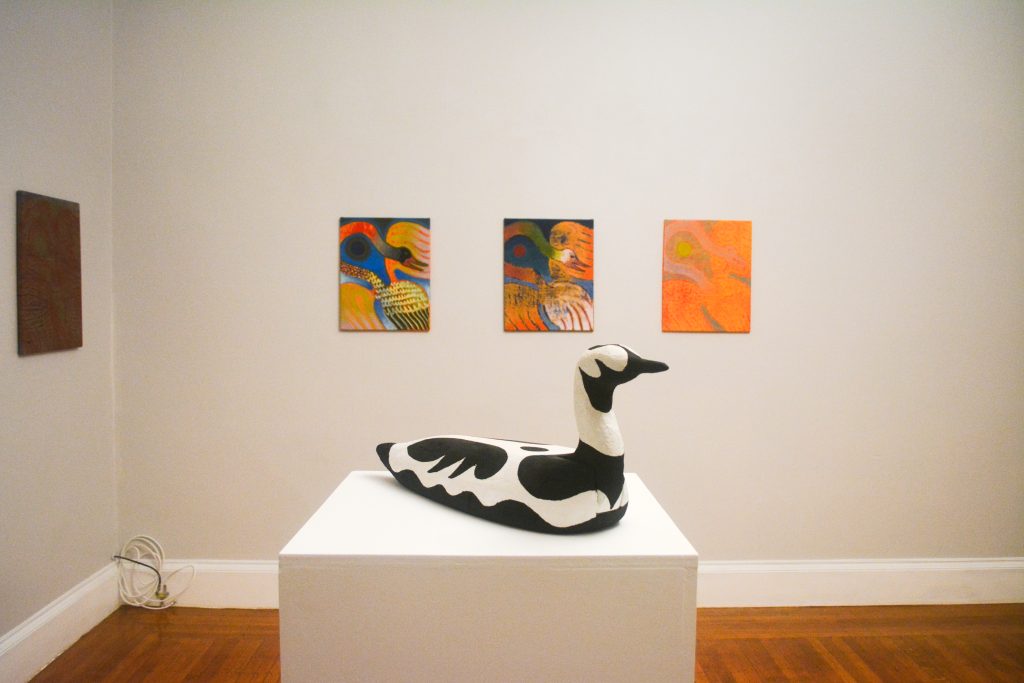
When I walk up to the triple-decker home on the quaint residential street, the blinds are closed. In the space between the blinds, a pedestal is visible in the center of an otherwise empty room. Is this the right place? I assume it is either the newly opened art gallery I seek, or some kind of cult centered around whatever mysterious artifact sits atop the pedestal. When I open the unlocked side door, I am greeted by Scott Lerner, the man behind East Manning Projects, and probably not a cult leader.
Lerner found out about this space when a friend of his from the Rhode Island School of Design helped the homeowner with renovations, and then hosted an art show throughout the entire house. The landlord enjoyed the experience, so Lerner inquired about renting the house for the same purpose. “He said yes, and I couldn’t pass up the opportunity.”
Since East Manning Projects opened in October 2023, they have hosted three shows featuring local artists. The gallery’s mission is to bring various members of the RI community together who might not otherwise cross paths. Lerner elaborates that he is, “also trying to [create opportunities for] artists and people who would consider themselves non-artists.” Lerner teaches at RISD and regularly conducts workshops on various art techniques, including techniques that are suitable for any level of artistic skill or experience. He enthusiastically tells me about a macaroni art show he’s planning for later this year. “I would very much like to have a five-year-old’s piece next to a RISD professor’s piece.”
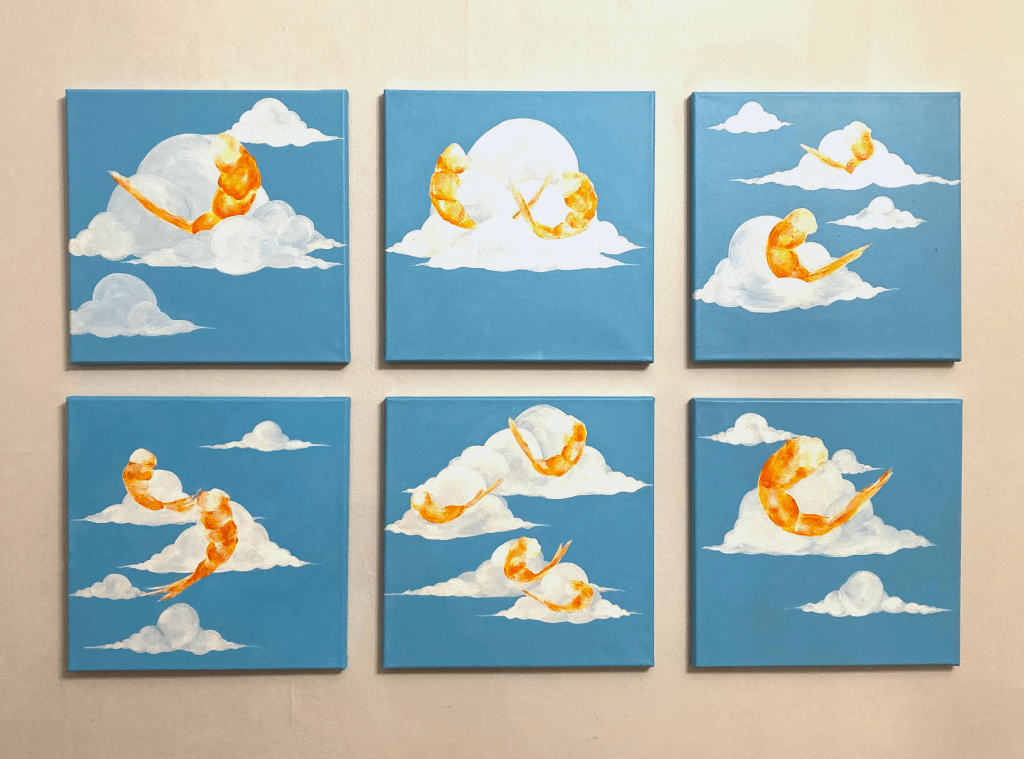
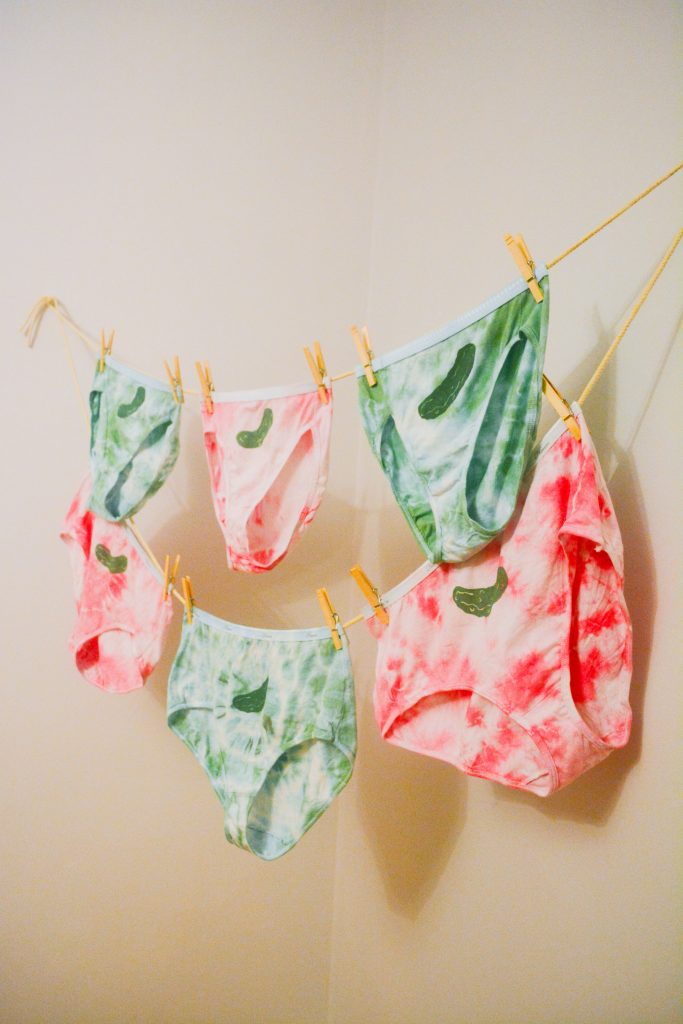
Artwork by Zo Baker.
When I ask about his favorite part of living above the gallery, he answers, “Spaces like museums, while they’re amazing because they have such great collections, you don’t get the opportunity to spend that much time with the work. I think the average person looks at a work of art maybe a minute or less. It seems very important to make it so people can live with art, and this has confirmed that for me.”
The artworks that Lerner has been living with lately explore ideas of repetition, iteration, and duplication — the theme of February’s show: “Do That Again.” The piece on the central pedestal that caught my eye from outside is a styrofoam loon decoy by Julian MacMillan. Decoys are made to resemble real birds for the purpose of attracting them to hunt, and they have a long history as a form of North American folk art. MacMillan tells me about his admiration for the loon’s graphic plumage, which he reinterprets in a similar style as the camouflage painted on warships, alluding to the sinister purpose of the decoy.
On the wall facing the loon hangs a group of paintings of swans with wings outstretched and necks encircling the moon. Each painting features the same image, made by rubbing a cast styrofoam sculpture, with different treatments in paint. MacMillan started exploring this process with gravestone rubbings in RI’s many cemeteries. The subject matter later evolved into birds, which hold meaning for his family. Swans in particular “seem to import something when they show up.” As they show up again and again in the series, one sees how their meaning changes over time.
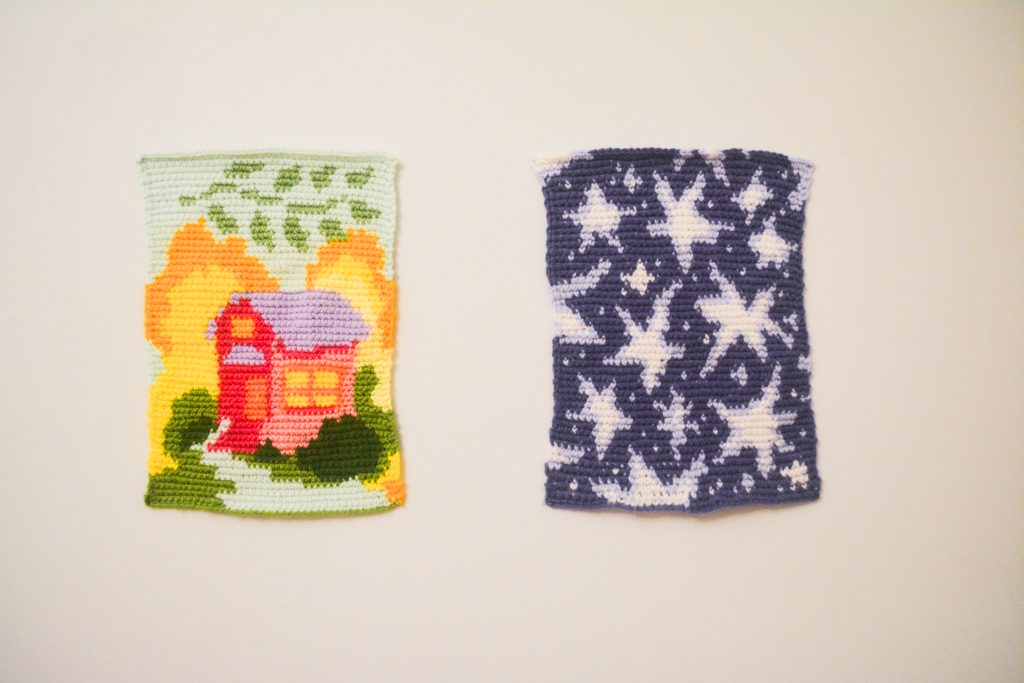
Across the room, Hannah Bashkow’s crochet wall hangings beckon for a closer look. One depicts a path lined with greenery that leads you to the door of a pink house. Creating an illustration with crochet is a challenging feat, even for someone who has crocheted since childhood like Bashkow. The stitches recall the repetitive domestic tasks that maintain a household — invisible labor generally done by women. She speaks to me about the perceived distinction between fiber arts and fine arts, born of the historical art establishment stance that handicrafts are not legitimate forms of artistic expression. By presenting her crochet pieces in a gallery, Bashkow aims to unravel this narrative.
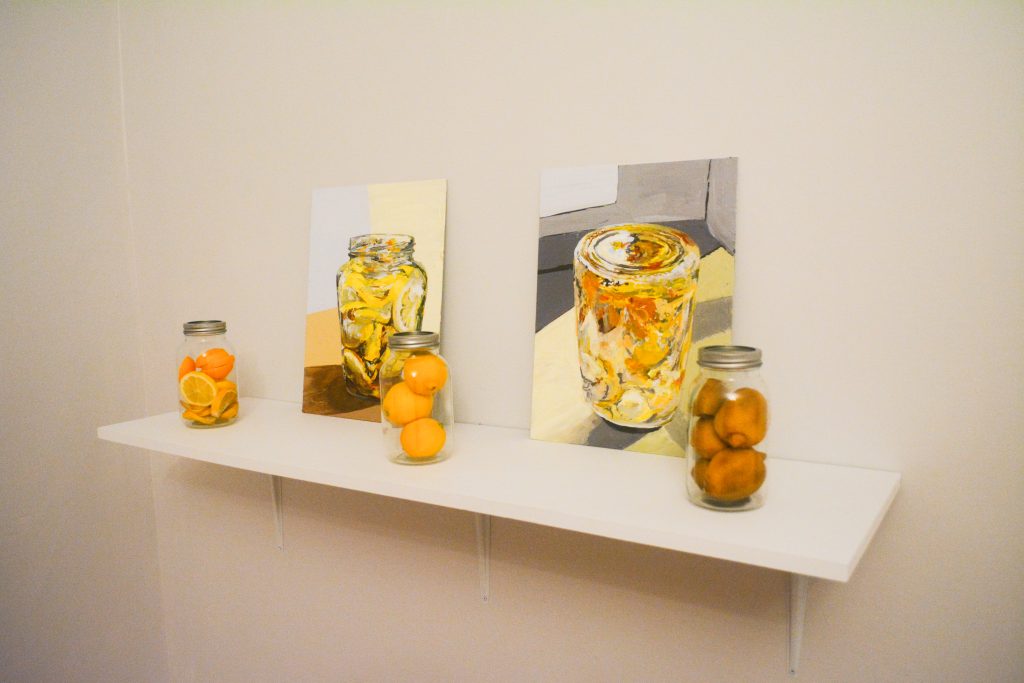
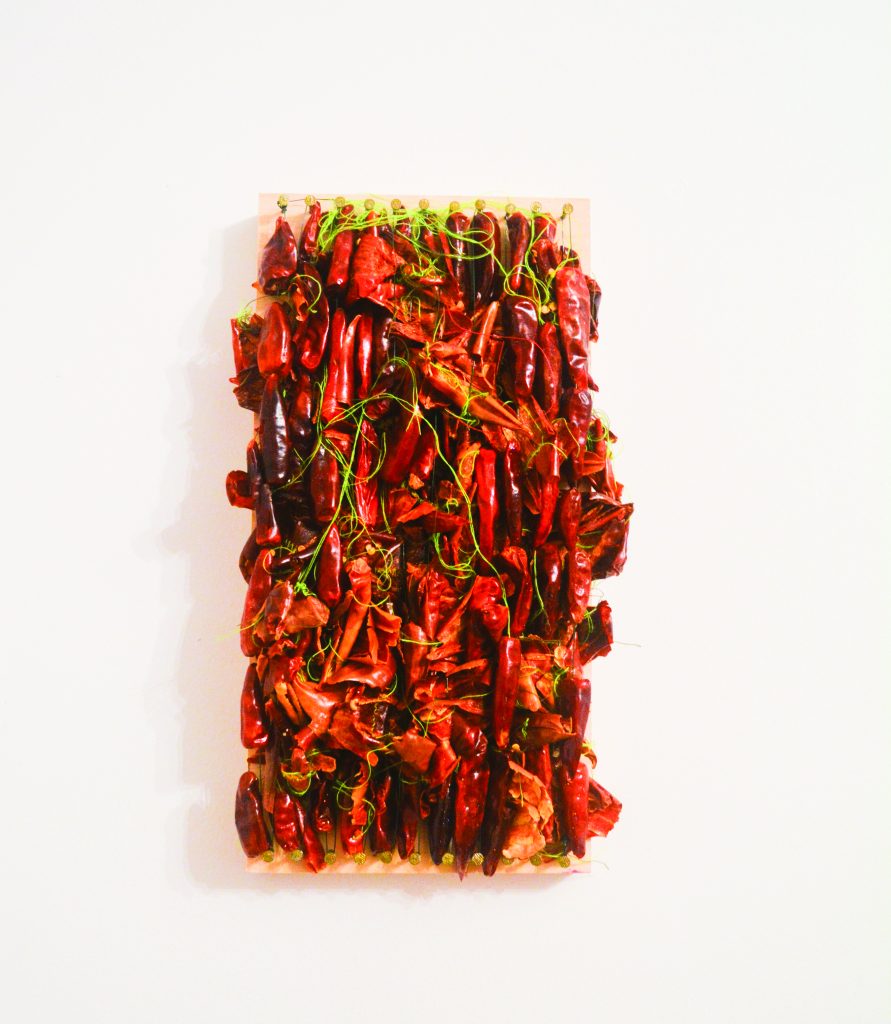
As I continue through the first floor of the New England triple-decker, themes of home and food intermingle. Eva Okrent’s painted lemon still-lifes sit behind jars of lemons in various stages of decomposition. Zoila Andrea Coc-Chang weaves dried chili peppers together in a tasty tapestry. Cooked shrimps, full of personality despite their missing heads, play atop fluffy white clouds in a family of paintings by Zo Baker — who invites gallery-goers to partake in shrimp cocktails while they view the show. These works, recontextualized in a household setting, encourage us not to simply take a look and move on, but to weave art into the fabric of our lives.
Learn more about East Manning Projects on Instagram @eastmanning projects. Their next show, “True Ecology,” opens March 1, 6 – 9pm.

